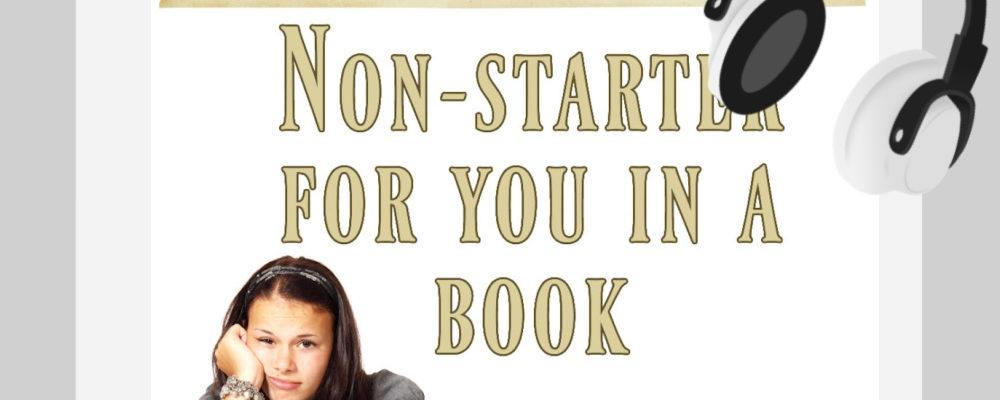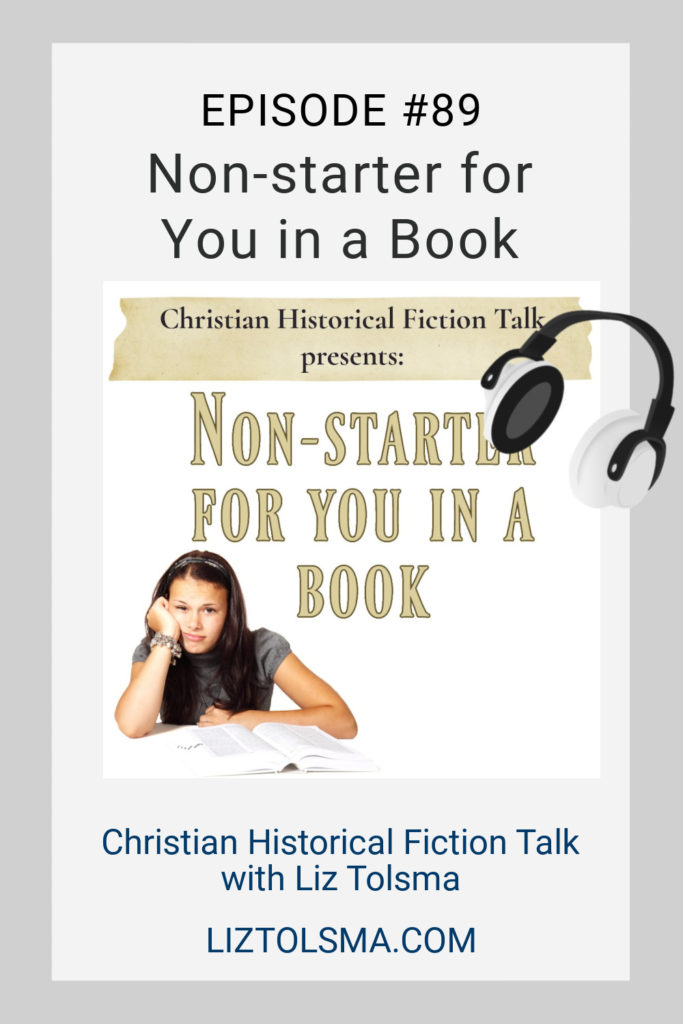
Christian Historical Fiction Talk is listener supported. When you buy things through this site, we may earn an affiliate commission.
Become a Patreon and enjoy special perks and bonus material.
On this episode, we discuss what are nonstarters in a Christian historical novel. What would make you not pick up a book or not finish reading it. Thank you, for sharing your thoughts on social media. If you aren’t following Christian Historical Fiction yet, please do!
Whare are some nonstarters for you?
1. Complicated plots, where there are too many storylines or too many characters to keep track of. Readers just want to relax and escape for a while. If you want something that’s not too simple nor too complex, try Melanie Dobson’s The Winter Rose.
2. Series with a cliffhanger, where the storylines aren’t all tied up at the end. Those are huge nonstarters. There is nothing more frustrating than investing in a book where you don’t get a payoff, then having to wait a year for the next book and having to reread the first one. If you like series but don’t want the cliffhangers, try out Barbour Publishing’s series, including True Color Crimes, Heroines of WWII, and Doors to the Past.
3. Foul language. This is another of those big nonstarters from the beginning. We read Christian fiction to get away from things like this. There are work arounds that are easy enough to employ.
4. Gratuitous violence. Readers don’t like violence played out on the stage in a graphic way, though sometimes books, by the nature of their subject, do have some violence. Still, it can be handled in a way that doesn’t offend the reader and isn’t a nonstarter. It’s a delicate balance, but it can be done. Check out my novel, The Melody of the Soul, for a look at how I handle it.
5. Poor editing. There is nothing worse that a book riddled by grammar and spelling mistakes, not to mention plot holes and the like. That’s a nonstarter if there ever was one.
6. Tropes you don’t like including a secret baby, friends to lovers, and the death of a child. Readers want something fresh and new, even a different spin on the traditional tropes. On the podcast, I mention History Tea Time with Lindsay Holiday and her series on American First Ladies. You can check that out here.
7. Insanely rich, totally good looking hero and heroines. Readers can’t relate to them. If you haven’t checked out Kelli Stuart’s book The Master Craftsman, her contemporary hero (it’s dual time) is a nerd. I loved him!
8. Stories that are too scary. They can be freaky and hard to read when you’re alone or at bedtime. Again, check out Barbour Publishing’s True Color Crime series or Jaime Jo Wright’s books. She writes creepy fiction, but it’s not too much. I love them, and I’m a big scaredy cat!
9. Hero or Heroine are not on scene right away. That makes it hard to know who they are, and the reader feels like they’re missing perspective or part of the story. A nonstarter for many.
10. A lot of chatting. Pages and pages of dialog can be tedious to wade through. Readers like books that get on with the action!
11. First person present tense POV. But check out Gabrielle Meyer’s book When the Day Comes for first person done well (it is past tense).
12. Bad theology. I tried to be delicate with this in the episode, but if you want some theologically sound novels, I try to be sound. Also look at Barbara Britton, Angela Hunt, Lynn Austin, among others.
13. Cheating. Like with language, we read Christian novels for a reason.
14. Big words. That kind of goes along with stories that are too complicated. No one wants to read with a dictionary by their side.
15. Silly storylines. Readers just don’e like their intelligence to be insulted. While they don’t mind fun, silly is just too much.

